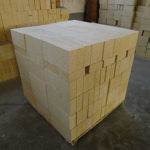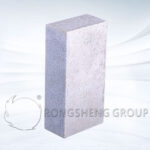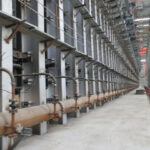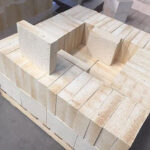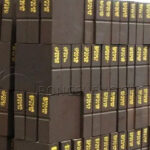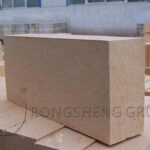Zirconia is an inorganic non-metallic material that is resistant to high temperatures, corrosion, and wear, and possesses excellent electrical conductivity. It is particularly favored for its excellent room-temperature mechanical properties and its resistance to high temperatures and corrosion, thus finding wide application in the refractory materials field.
The Role of Zirconia in Refractory Materials
ZrO2 in oxide product systems possesses many excellent characteristics. These include a high melting point (2700℃), high high-temperature structural strength (able to withstand a load of 200Kpa at 2000℃ for 0.5~1 hours before deformation), good chemical stability (high chemical inertness to acids, alkalis, and glass), and low wetting by liquid metals (good resistance to many molten metals, even highly reactive Group IV, V, and VI metals). It also has low high-temperature vapor pressure and decomposition pressure, and lower volatility than Al2O3 and MgO. The role of zirconium oxide in refractory materials is as follows:
- (1) Good chemical stability, prolonging the corrosion of refractory materials by metal ions such as Fe.
- (2) Improve material properties and enhance the thermal stability of refractory products.
- (3) Optimize production processes based on the different properties of composite components to improve the performance of refractory products and reduce production costs.
- (4) The high melting point of the composite material corresponds to a higher production temperature than low melting point mixtures.
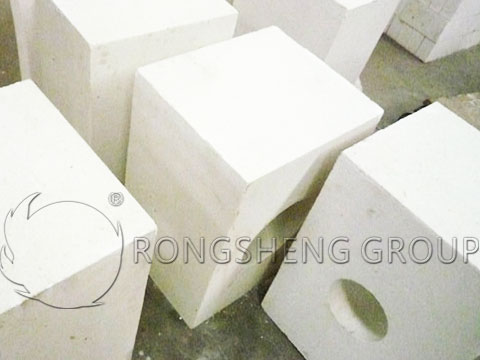
Zirconia Hollow Sphere Bricks
The production method of zirconia hollow sphere bricks is similar to that of alumina hollow sphere bricks. However, its melting temperature is much higher, exceeding 2700℃. In China, CaO is widely used as a stabilizer. Zirconia hollow sphere products are made entirely from zirconia hollow spheres, possessing good high-temperature strength and a stable porosity. They are used as insulation materials in ultra-high temperature equipment, such as furnace covers, carbon black reactors, tungsten rod furnaces, and molybdenum furnaces.
Sizing Nozzles
Most steel billets worldwide are now produced using continuous casting technology, making the service life and performance of refractory materials for sizing nozzles crucial. Zirconia sizing nozzles are widely used in the tundishes of small square billet continuous casting. The performance of the nozzle directly affects the length of continuous casting. Sizing nozzles are the nozzle bricks used in sliding nozzle devices during the casting of square billets in steel mills. Zirconia nozzles exhibit good resistance to corrosion from molten steel and slag, and are typically made from high-purity zircon, CaO-stabilized ZrO2, and industrial-grade zirconia. The most critical components of a sliding gate assembly are the sliding plate brick and the gate brick embedded within it. The assembly typically consists of upper and lower sliding plate bricks and upper and lower gate bricks. Casting begins when the upper and lower gate bricks align. The upper gate brick is mounted on the bottom of the ladle and remains stationary along with the upper sliding plate brick. The lower gate brick slides along with the lower sliding plate brick, achieving angle steel control. The upper gate brick is immersed in molten steel for extended periods and is relatively difficult to replace, requiring high-quality products and a long service life. The lower gate brick primarily controls the casting speed and quality, with lower service life requirements; its lifespan can reach 8 hours or longer.
Zirconia Furnace Materials
A certain company has successfully developed a zirconium refractory material containing 94%~95% zirconium oxide, which has been used in the top and key parts of glass furnaces, significantly extending the lifespan of the furnaces. Zirconia, as a refractory material, is primarily used in key parts of large glass tank furnaces. Early versions used zirconium refractory materials with a zirconium oxide content of only 33%~35%. By melting and blowing the zirconium oxide, hollow zirconium spheres of varying sizes are obtained, which are then used to prepare various high-grade insulating bricks, avoiding the dust pollution problem caused by the aging of ceramic fibers.
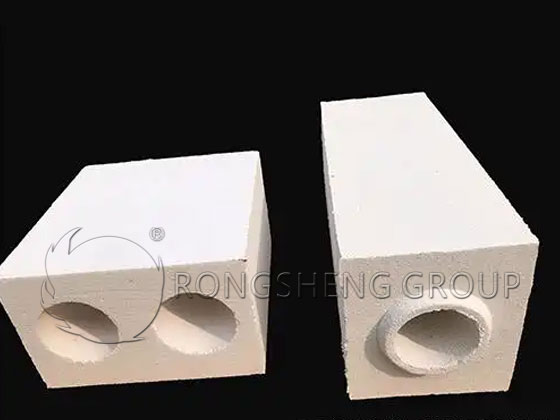
Performance of High-Purity Zirconia Insulating Products Prepared from Sintered Porous Aggregates
Zirconium oxide has a melting point of 2715℃, low thermal conductivity, and good chemical stability. High-purity zirconia refractories prepared from it are currently the most mature refractory materials for industrial application in ultra-high temperature and oxidizing atmospheres above 1700℃. Due to the large temperature difference between the ultra-high temperature working zone and the surrounding environment, and the high heat exchange efficiency, the thermal conductivity of insulating refractory materials has a significant impact on heat loss in the application environment.
High-purity zirconia refractories are made from fully stabilized or semi-stabilized zirconia with solid-solution stabilizers (usually CaO, MgO, Y2O3, etc.). These are shaped refractory products with a total mass fraction of zirconia and stabilizers >98%, produced by high-temperature sintering. Examples include heavy zirconia bricks, hollow zirconia bricks, and zirconia fiber products.
Heavy zirconia bricks are prepared using stabilized electrofused dense zirconia particles as aggregate and electrofused stabilized zirconia fine powder and zirconia micro powder as the matrix.
Zirconia hollow sphere bricks use electrofused and stabilized zirconia hollow spheres as aggregate, with a matrix composition similar to heavy zirconia bricks. Zirconia hollow spheres are formed by compressed air blowing molten zirconia and stabilizers, followed by cooling to create small spheres with a hollow structure and a diameter of 0.2–3 mm. Due to their unique structure, the thermal conductivity of zirconia hollow sphere bricks is only about half that of heavy zirconia bricks.
Zirconium oxide fiber products are lightweight thermal insulation materials made primarily from chemically prepared stabilized zirconia fibers. Their thermal conductivity is similar to that of traditional aluminosilicate refractory fiber products, but their mechanical strength is low. They exhibit significant shrinkage and are prone to pulverization at high temperatures, limiting their application as high-temperature structural linings.
Zirconium oxide hollow sphere bricks have moderate thermal conductivity and significantly higher mechanical strength than fiber products, making them widely used in ultra-high temperature insulation linings for tungsten-molybdenum sintering furnaces. However, the smooth surface of the zirconia hollow sphere particles leads to poor bonding with the fine matrix powder, resulting in severe cracking during use.
Sintering produces refractory materials with higher sintering activity than electrofusion. Sintered mullite and tabular corundum have achieved better performance and application results in some fields, replacing electrofused mullite and electrofused white corundum. Zirconia ceramics, as stabilized sintered zirconia, have also been widely used in many applications. Sintering with added loss on ignition materials easily yields lightweight zirconia aggregates with porous structures. High-purity zirconia insulation products are prepared using sintered porous zirconia aggregates as raw materials.
Sintered porous zirconia aggregates possess high porosity and a microporous structure, exhibiting high sintering activity. High-purity zirconia materials prepared using sintered porous zirconia aggregates as aggregates and electrofused zirconia fine powder and monoclinic zirconia micro powder as matrices are lightweight, high-strength, and highly efficient insulated. Their performance is comparable to traditional zirconia hollow sphere insulation bricks in terms of high-temperature mechanical strength, thermal conductivity, and high-temperature creep. However, high-purity zirconia thermal insulation products prepared from sintered porous aggregates have a uniform, microporous microstructure and higher room-temperature mechanical strength, combining the advantages of “energy saving + structure”, and are a potential ultra-high temperature energy-saving refractory material.

